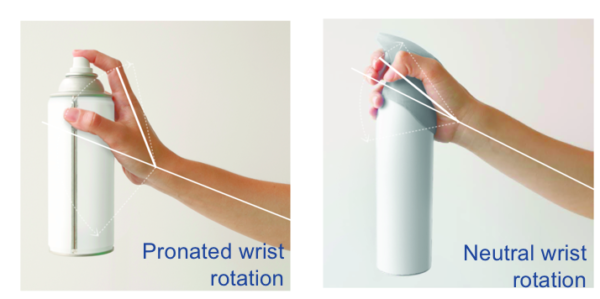Have the aisles at your local grocery store seemed like they were closing in on you?

The feeling might not be all in your head. Over the past few decades, grocery stores have gone from carrying approximately 7,000 items to upwards of 50,000, according to MarketWatch.
With so much competition among product categories, it’s easy to see why product differentiation has become so important. And in one instance, enhancing a product’s design not only improved shelf differentiation, but it also led to raising the category’s price ceiling.
A client of ours needed a new, custom actuator for its aerosol air freshener product. Its existing product was successful, yet firmly in the category’s median price point at €1.45 per 300 ml unit (€0.48/100ml), under the category’s cap of €2.00. Much of this was attributed to its standard push-button actuator, similar to virtually all others in the category.
Customer-centric design is critical to product differentiation. Despite the commonality of push-button actuators, they are not always ergonomically sound. Because of the way people hold the canister and place their index finger on the button, their fingers are forced to work independently from each other. This causes additional stress on the application finger, making it difficult to use for a prolonged period of time.
Instead, our design team developed a trigger actuator that allowed for a more neutral wrist rotation and for the fingers to work together when applying pressure. Additionally, the custom trigger and skirt gave the air freshener a stronger premium appearance.

Following the air freshener’s redesign, the product outperformed its competitors and effectively raised the price ceiling for aerosol air fresheners in its market. The redesigned product with a customer-focused actuator sold for €2.95 per 275ml unit (€1.07/100ml) – a 123 percent increase over the previous model and nearly a full euro more than the category’s existing price cap. Furthermore, the redesigned product led to an increase in repeat purchases.
The million-dollar question for virtually every company is, “How can we get our customers to pay more for our product?”
Sometimes, you don’t need a new formula or product, just a new design that puts the customer first.
